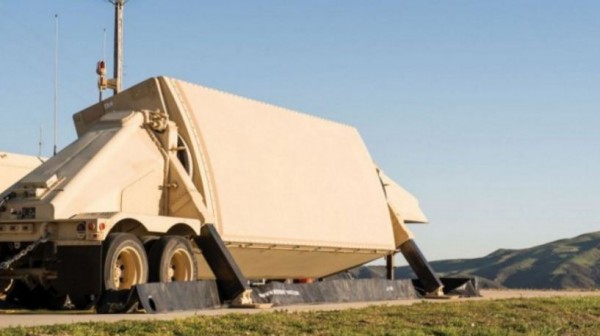By Arthur Dominic J. Villasanta , | April 17, 2017

The THAAD radar: AN/TPY-2
The U.S. Missile Defense Agency (MDA) has awarded a contract that will greatly increase the already huge detection range of its existing and future AN/TPY-2 radars that equip its anti-ballistic missile systems -- including THAAD or the Terminal High Altitude Area Defense system to be deployed to South Korea a few months from now.
Like Us on Facebook
Raytheon Company, the maker of the AN/TPY-2, was awarded a $10 million contract modification to continue the development of hardware and software that will add gallium nitride, or GaN semiconductor technology to the AN/TPY-2 ballistic missile defense radar.
GaN increases the radar's range, search capabilities and enables the system to better discriminate between threats and non-threats. Gallium nitride technology also increases the system's overall reliability while maintaining production and operational costs.
A critical element in the ballistic missile defense system, Raytheon's AN/TPY-2 continually searches the sky for ballistic missiles.
Raytheon claims its AN/TPY-2 is the world's most capable land-based, X-band, ballistic missile defense radar. Adding GaN technology modernizes the system so it can defeat all classes of ballistic missiles in extreme operational environments.
With the new contract, the AN/TPY-2 will become the world's first transportable, land-based ballistic missile defense radar to use GaN technology.
The AN/TPY-2 radar operates in two modes.
In Forward-Based Mode, the radar is positioned near hostile territory and detects, tracks and discriminates ballistic missiles shortly after they are launched. The range of THAAD in a Forward-Based Mode remains secret but might be anywhere from 1,500 km to 3,000 km, according to experts.
The new upgrades might boost this range to over 4,000 km.
In Terminal Mode, THAAD has a range of 600 km. It detects, acquires, tracks and discriminates ballistic missiles as they descend to their target.
The terminal mode AN/TPY-2 is the fire control radar for the Terminal High Altitude Area Defense ballistic missile defense system, by guiding the THAAD missile to intercept a threat.
Russia argues the detection abilities of THAAD's radar will allow the U.S. to spy on Russian and Chinese ballistic and aerodynamic targets up to 1,500 kilometers away. From South Korea, the Americans can peer into the Russian territory and China's, as well, said the Russians.
The Russians and Chinese have jointly held anti-missile drills using computer modeling even before the decision to deploy THAAD to South Korea was announced. The next step for Russia and China after the formal decision to set up a joint defense system will be to acquire hands-on experience of intercepting ballistic targets in joint exercises.
-
Use of Coronavirus Pandemic Drones Raises Privacy Concerns: Drones Spread Fear, Local Officials Say

-
Coronavirus Hampers The Delivery Of Lockheed Martin F-35 Stealth Fighters For 2020

-
Instagram Speeds Up Plans to Add Account Memorialization Feature Due to COVID-19 Deaths

-
NASA: Perseverance Plans to Bring 'Mars Rock' to Earth in 2031

-
600 Dead And 3,000 In The Hospital as Iranians Believed Drinking High-Concentrations of Alcohol Can Cure The Coronavirus

-
600 Dead And 3,000 In The Hospital as Iranians Believed Drinking High-Concentrations of Alcohol Can Cure The Coronavirus

-
COVID-19: Doctors, Nurses Use Virtual Reality to Learn New Skills in Treating Coronavirus Patients










